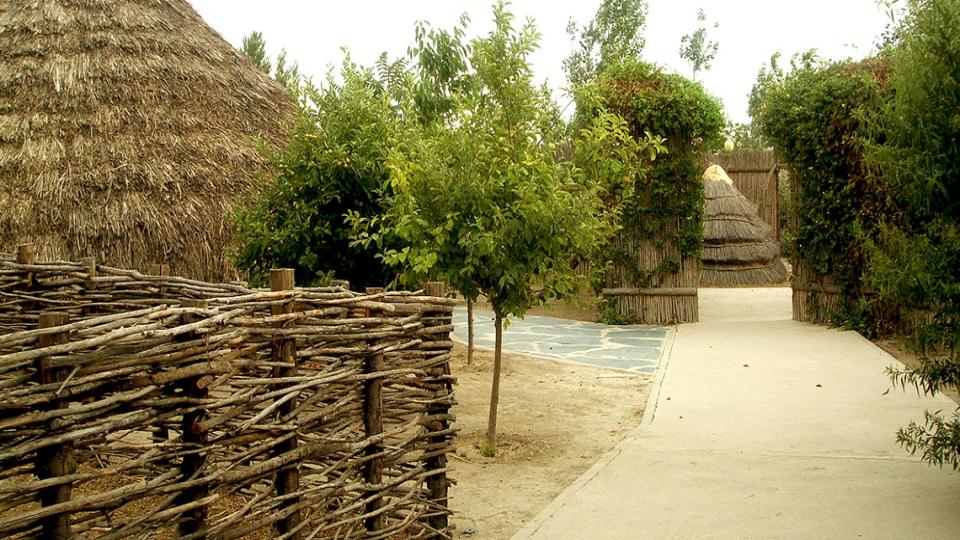Chalcolithic
Arqueopinto (ES)
Arqueopinto is an area of two hectares of land located south of the city of Madrid. It is municipally owned and managed by the Paleorama Company. Visitors come from all over Spain, though mainly from the central area. It has a clear school and family vocation although there are also courses for adults on prehistoric technology (ceramic, lithic knapping, basketry, etc.).
Did people know they were people or did they still think they were monkeys (NL)?
Many peoples modestly called and still call themselves ‘people’, like the Ainu in Japan or the Inuit of the Polar Circle as do many others. Prehistoric groups of people like the Neanderthal may have had the same habit...
I saw visitors throw coins into a few of the wooden canoes in the museum. Why (DE)?
This question rather requires answering by ethnologists. From archaeological view, this phenomenon can easiest be explained as the popular adaptation of earlier ‘”water cults”. From prehistory, we know numerous sacrifices...
How did people make bread in those days (NL)?
Both in the Middle Ages as in prehistory the same story: using a bread oven. For a bread, you need to grind corn (a very time consuming effort), make dough of it and let it rise with yeast...
How did people actually communicate with one another (NL)?
This question goes for prehistory and the Middle Ages as well. From the emergence of modern man (the homo sapiens sapiens, following the homo sapiens neanderthalensis) we are sure people used spoken language...
How long does prehistory already exist (NL)?
We usually let prehistory start with the emergence of mankind. Of course, the planet is much older than that, but that part of the past is studied by palaeontologists...
Roughly estimated, how many people inhabited the world in the year 1 AD (NL)?
The World Population 25,000 years ago was about 3,5 million people. In AD 1, these were about 170 million...
People back then were not that stupid after all … (CH)
No, why should they! The modern human (Homo sapiens sapiens) is around for about 37,000 years. Ever since, people have the same appearance and the same development of the brain as we do...
How many people lived in a Neolithic house in Northwest Schleswig (DE)?
This is not easy to say. We think that it could have been about ten persons in one long-house – all ages, all sexes, all social groups. We only can make comparisons to houses from younger times to get some idea...
How many people stayed on a Crannog (UK)?
Crannogs varied in size but it would probably be an extended family of parents, grand parents and children, aunts uncles, cousins, etc. Crannogs were used from 5,000 years ago to as recently as 250 years ago, so the number of people staying there would have changed as the function of crannogs changed.

